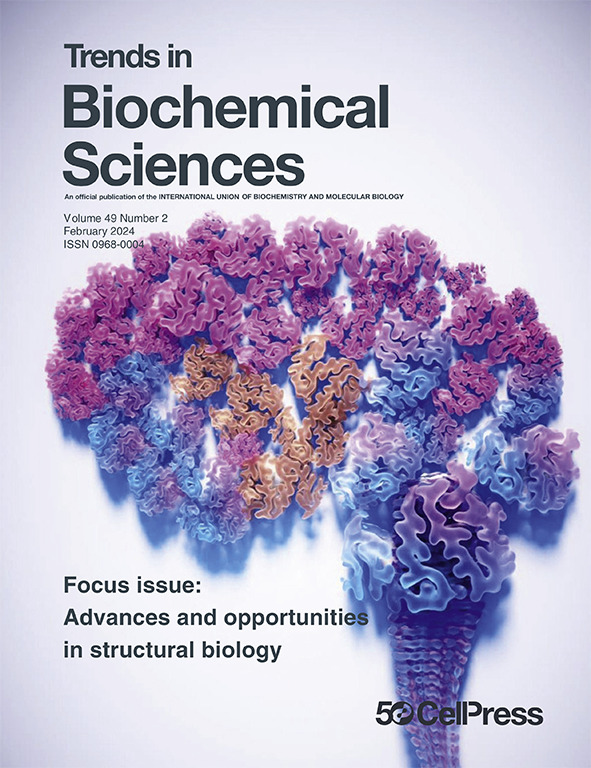Functionalized DNA secondary structures and nanostructures for specific protein modifications
IF 11.6
1区 生物学
Q1 BIOCHEMISTRY & MOLECULAR BIOLOGY
引用次数: 0
Abstract
The development of non-biological applications of DNA has not only resulted in delicately shaped DNA-based nano-objects with complex functions but also spawned their use for novel catalytic applications. From the multitude of applications of DNAzymes that operate on a relatively simple substrate, we have witnessed the emergence of multifunctional catalytically active DNA-based nanostructures for one of the most challenging tasks known to a chemist: the controlled and precise modification of a wild-type protein in its natural environment. By incorporating various elements associated with post-translational modification (PTM) writer enzymes into complex nanostructures, it is now possible to chemically modify a specific protein in cell lysates under the influence of an externally added trigger, clearly illustrating the promising future for this approach.
用于特定蛋白质修饰的功能化 DNA 二级结构和纳米结构。
脱氧核糖核酸(DNA)非生物应用的发展不仅造就了形状精致、功能复杂的脱氧核糖核酸(DNA)纳米物体,还催生了它们在新型催化应用中的使用。从 DNA 酶在相对简单的底物上的大量应用中,我们看到了多功能催化活性 DNA 纳米结构的出现,这种结构可用于化学家已知的最具挑战性的任务之一:在自然环境中对野生型蛋白质进行可控和精确的修饰。通过在复杂的纳米结构中加入与翻译后修饰(PTM)作者酶相关的各种元素,现在有可能在外部添加触发器的影响下,对细胞裂解物中的特定蛋白质进行化学修饰,这清楚地表明了这种方法的美好前景。
本文章由计算机程序翻译,如有差异,请以英文原文为准。
求助全文
约1分钟内获得全文
求助全文
来源期刊

Trends in Biochemical Sciences
生物-生化与分子生物学
CiteScore
22.90
自引率
0.70%
发文量
148
审稿时长
6-12 weeks
期刊介绍:
For over 40 years, Trends in Biochemical Sciences (TIBS) has been a leading publication keeping readers informed about recent advances in all areas of biochemistry and molecular biology. Through monthly, peer-reviewed issues, TIBS covers a wide range of topics, from traditional subjects like protein structure and function to emerging areas in signaling and metabolism. Articles are curated by the Editor and authored by top researchers in their fields, with a focus on moving beyond simple literature summaries to providing novel insights and perspectives. Each issue primarily features concise and timely Reviews and Opinions, supplemented by shorter articles including Spotlights, Forums, and Technology of the Month, as well as impactful pieces like Science & Society and Scientific Life articles.
 求助内容:
求助内容: 应助结果提醒方式:
应助结果提醒方式:


